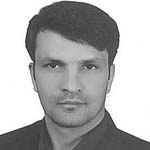Spatial Structure of Inter-Provincial Migration in Iran: Application of Log-linear Models
The purpose of this paper is to investigate the spatial structure of international immigrants in Iran using log-linear models. For this purpose, inter-provincal migration data were analyzed in the 2011 and 2016 censuses, and then the future of the spatial structure of migration flows will be projected by 2026. Findings indicated that the overall level of inter-provincial migration has increased by four percent during the two censuses of 2011 and 2016, and, Tehran has had the largest share in the origin and destination of immigration during the last two censuses and based on the findings will maintain this position until 2026. However, migration structure has not been stable for most provinces during the two censuses. The results of interactive component analysis of provinces show that the provinces have the most interaction with their neighboring provinces. Overall, the current spatial structure and also the future perspective of internal migration in Iran is influenced by the unequal and unbalanced pattern of development in the provinces of the country. Therefore, policies that can reduce regional inequalities in the country can help to the optimal redistribution of the national population.
-
An Investigation on Identity Challenges Faced by Muslim Women Immigrants in Europe
Reyhanesadat Gerami, Younes Nourbakhsh *,
Women in Development and Politics, Spring 2025 -
The Pendulum of Care from Suspension to Continuity: A Qualitative Study of Family Caregivers for the Elderly in Yazd, Iran
Maryam Sabaghchi, Abbas Askari-Nodoushan *, Ali Ruhani
Journal of Sociology of Social Institutions, -
Emergence of economic demands, a grounded theory of the economic demands of women in Yazd city
Negin Naeimi, Seyedalireza Afshani *, Ali Ruhani, Abbas Askari-Nodoushan
Journal of Economic Sociology and Development, -
Socio-spatial Fault: Understanding and Meaning of Afghan Immigrants of Spatial Segregation in Tehran
Noureddin Farrash, *, Hamid-Reza Rabiei-Dastjerdi, Hossein Mahmoudian
Journal of Social Continuity and Change, Spring-Summer 2025



